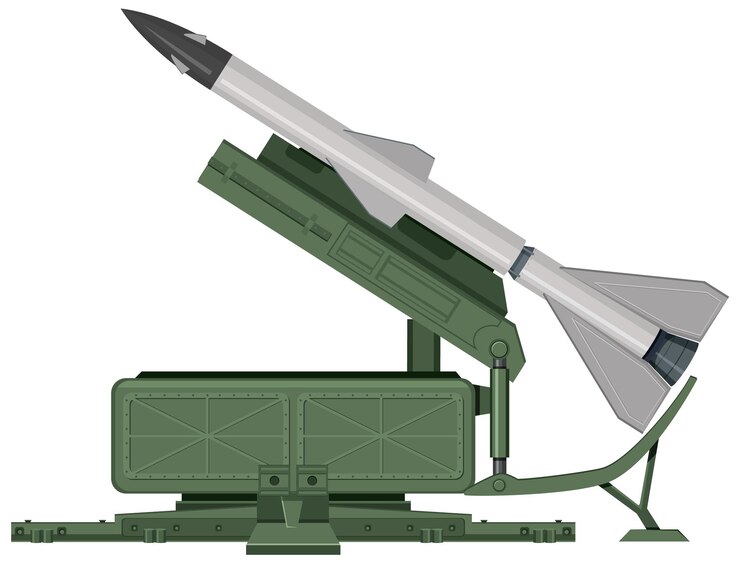
Design For Test Aster Technologies
Introduction to Design For Test Aster Technologies
In the fast-evolving landscape of technology, achieving high-quality products is essential. For semiconductor companies, ensuring that their designs are not only efficient but also testable can make all the difference. Design For Test Aster Technologies is useful in this situation. It’s a critical aspect that sets the stage for robust testing and quality assurance in electronics manufacturing.
Aster Technologies stands out as a leader in this domain, offering innovative solutions tailored to enhance DFT processes. Their expertise enables engineers to navigate the complexities of design while optimizing performance and reliability. As we delve deeper into the world of Design For Test with Aster Technologies, you’ll discover how prioritizing design integrity leads to better outcomes not just on paper but in real-world applications too. Join us as we unlock the secrets behind superior product quality through effective DFT strategies!
Understanding Design for Test (DFT)
Design for Test (DFT) is a crucial methodology in the electronics industry. It focuses on enhancing the testability of semiconductor devices during their design phase.
By integrating DFT principles, engineers create circuits that are easier to diagnose and validate. This approach minimizes potential failures and reduces manufacturing costs.
The essence of DFT lies in enabling comprehensive testing strategies that detect defects early in the production process. When implemented correctly, it streamlines both functional and structural testing.
Moreover, adopting DFT fosters collaboration between design and test teams. This partnership ensures that all aspects of device performance are carefully considered from the start.
Understanding DFT empowers professionals to deliver higher quality products with improved reliability in an increasingly competitive market. It’s about making testing not just an afterthought but a fundamental part of product development.
The Role of Design for Test in the Semiconductor Industry
Design for Test (DFT) plays a pivotal role in the semiconductor industry. As devices become more complex, ensuring their reliability is crucial. DFT integrates testing considerations into the early design phase, allowing engineers to identify potential issues before they escalate.
By embedding testability features within designs, manufacturers can streamline their processes. This not only saves time but also reduces costs associated with late-stage troubleshooting. The ability to effectively test chips enhances product quality and bolsters consumer trust.
Moreover, DFT aids in meeting stringent regulatory standards that govern semiconductor production. With an emphasis on precision and accuracy, it ensures that every component functions as intended under various conditions.
The increasing demand for high-performance electronics makes DFT more essential than ever. Companies leveraging effective DFT strategies gain a competitive edge by delivering superior products faster and at lower costs.
Challenges Faced by Engineers in Implementing DFT
Implementing Design for Test (DFT) comes with a range of challenges that engineers must navigate. One major hurdle is the integration of DFT methodologies into existing workflows. This often requires revisiting design processes, which can disrupt timelines.
Another challenge lies in balancing test coverage and performance. Engineers aim to achieve comprehensive testing without compromising device speed or power efficiency. Striking this balance demands careful planning and innovative thinking.
Moreover, there’s the complexity of managing various tools and technologies involved in DFT implementation. Compatibility issues may arise, making it difficult to maintain seamless operations across different platforms.
Engineers also grapple with an evolving landscape of standards and regulations in the semiconductor industry. Keeping up-to-date while ensuring compliance can be daunting, leading to potential oversights during the design phase.
These multifaceted challenges necessitate adaptable strategies tailored to each project’s unique requirements.
Introducing Aster Technologies and Their Solution for DFT
Aster Technologies stands at the forefront of innovation in the realm of Design For Test (DFT). Their solutions are designed to tackle the complexities that engineers face when integrating testability into semiconductor designs.
With a keen focus on enhancing quality and reliability, Aster provides tools that streamline DFT processes. These tools ensure that testing is not an afterthought but an integral part of design from the very beginning.
Their approach emphasizes automation and efficiency, allowing for faster turnaround times without compromising on quality. As technology evolves, so do their offerings, continuously adapting to meet industry demands.
Aster’s team of experts collaborates closely with clients, understanding specific challenges and tailoring solutions accordingly. This personalized touch ensures optimal results while fostering strong partnerships within the semiconductor landscape.
Benefits of Using Aster Technologies for DFT
Aster Technologies brings a wealth of advantages to the Design For Test (DFT) landscape. Their innovative approach ensures seamless integration of testing methodologies during the design phase. This proactive strategy ultimately saves time and reduces costs.
One standout benefit is enhanced test coverage. Aster’s tools allow for comprehensive analysis, meaning potential issues are identified early in the development process. This leads to fewer surprises down the line.
Additionally, the user-friendly interface simplifies complex tasks. Engineers can focus on creativity instead of getting bogged down by technical hurdles.
Another significant advantage is improved collaboration among teams. Aster fosters communication between design and test engineers, leading to better alignment on project goals and outcomes.
With real-time data analytics, Aster Technologies empowers users with insights that drive decisions. This level of visibility accelerates debugging processes and increases overall product reliability.
The Future of Design For Test with Aster Technologies
The future of Design For Test (DFT) with Aster Technologies looks promising. As technology evolves, the need for more efficient testing solutions becomes crucial. Aster is at the forefront of this transformation.
With advancements in artificial intelligence and machine learning, DFT processes are becoming smarter. These technologies enable real-time analysis and faster decision-making, streamlining workflows significantly.
Aster Technologies continues to innovate by integrating these capabilities into their DFT solutions. This integration not only enhances accuracy but also reduces costs associated with traditional testing methods.
Additionally, as industries push towards increased automation, Aster’s tools will play a vital role in ensuring that designs meet rigorous quality standards from the outset. Continuous improvements mean that clients can expect robust support throughout their development cycles.
Companies leveraging Aster’s expertise will stay ahead of market demands while delivering superior products efficiently.
Case Studies: How Aster Technologies Helped Improve Quality and Time-to-Market
Aster Technologies has transformed the landscape of Design For Test through compelling case studies that showcase their expertise. One noteworthy example involved a leading semiconductor manufacturer struggling with high defect rates in their chips.
By implementing Aster’s advanced DFT solutions, the manufacturer improved test coverage significantly. The result? A staggering 30% reduction in defects, enhancing product reliability and customer satisfaction.
In another instance, a startup faced mounting pressure to launch its new product quickly. Aster stepped in with tailored DFT strategies that streamlined their testing processes. Consequently, they successfully reduced time-to-market by an impressive four weeks.
These real-world examples highlight how Design For Test Aster Technologies not only addresses challenges but also drives innovation within organizations seeking quality improvements and faster deployments. Each case serves as proof of the tangible benefits derived from effective design for test methodologies.
FAQ’s
Design For Test Aster Technologies often raises questions among professionals in the semiconductor industry. What exactly is DFT? This method integrates testability into the design phase, ensuring that products can be tested efficiently and effectively.
Another common inquiry revolves around its necessity. Why prioritize DFT? The answer lies in reducing costs associated with testing failures and enhancing overall product quality.
People also want to know how Design For Test Aster Technologies stands out in this area. Their innovative tools streamline the implementation of DFT practices, making it easier for engineers to integrate these crucial components without compromising on design integrity.
Many are curious about training and support options available through Aster Technologies. They offer comprehensive resources that empower teams to utilize DFT strategies fully. Whether you’re new or experienced, there’s always something valuable to learn within their framework.
Conclusion
The significance of Design For Test Aster Technologies cannot be overstated. As the semiconductor industry continues to evolve, the demand for high-quality and reliable products is paramount. Implementing DFT practices enhances testing capabilities, reduces time-to-market, and ultimately leads to customer satisfaction.
Design For Test Aster Technologies stands out as a pivotal player in this arena. Their innovative solutions address common challenges faced by engineers while providing tangible benefits that bolster product quality and reduce costs. With their expertise, organizations can streamline processes and optimize designs for effective testing.
As we look ahead, it’s clear that the future of Design For Test Aster Technologies lies with companies like Aster Technologies. They are at the forefront of ensuring that quality remains uncompromised as technology advances rapidly.
Through real-world case studies demonstrating success stories across various sectors, it’s evident that embracing DFT principles will yield significant returns on investment for businesses willing to adapt.
The journey toward mastering design for test is ongoing but filled with promise especially when guided by forward-thinking technology providers like Aster Technologies.





